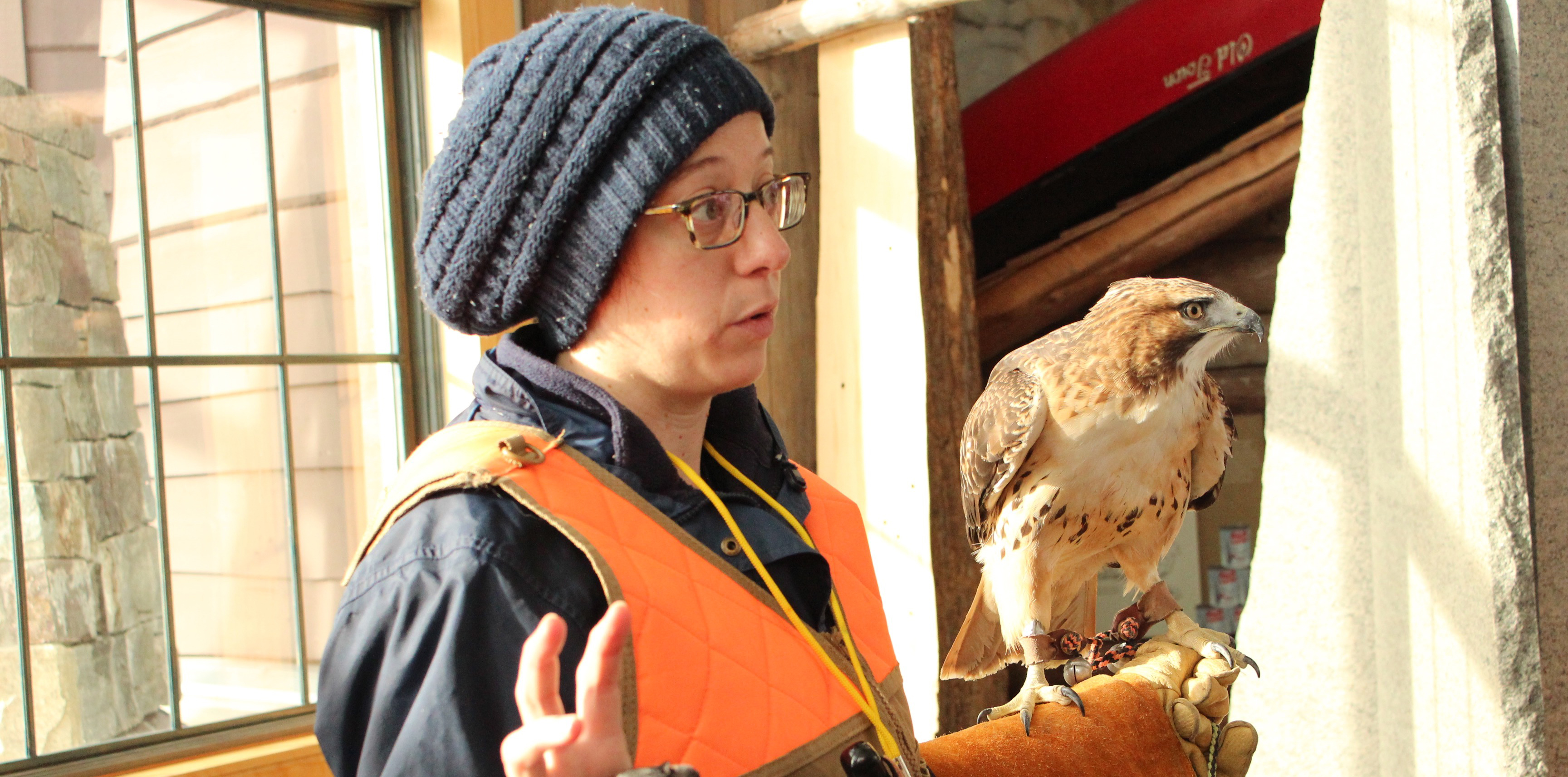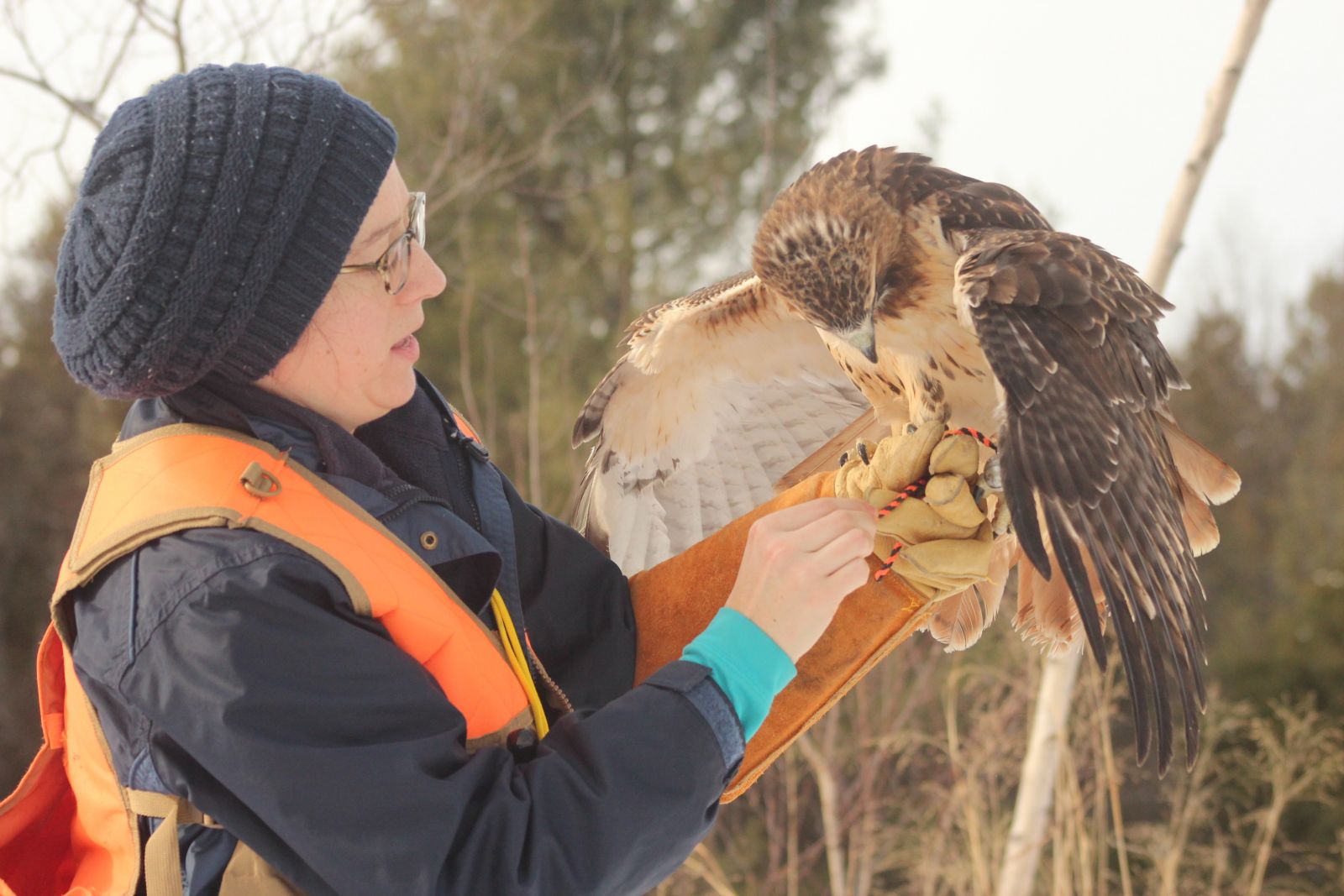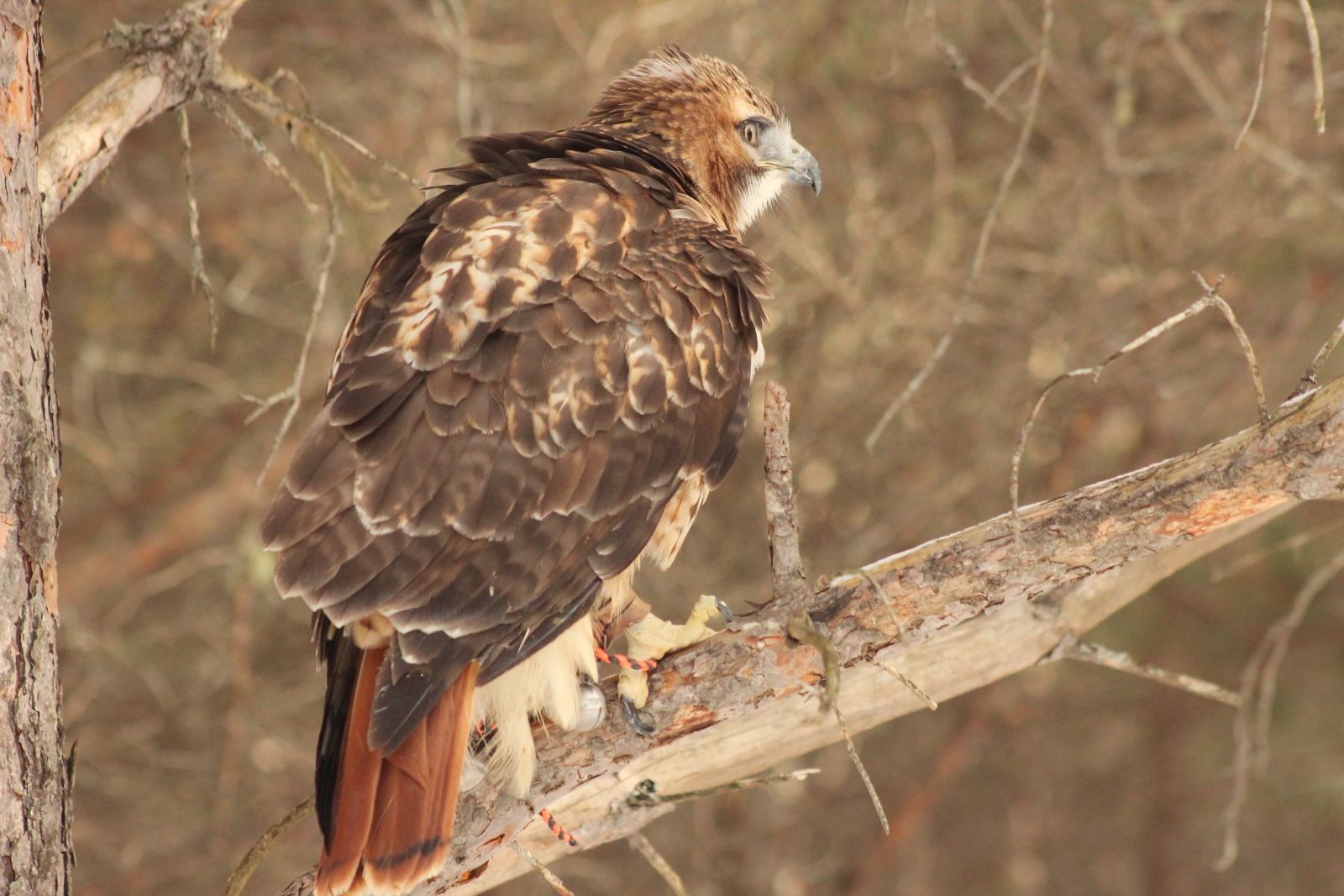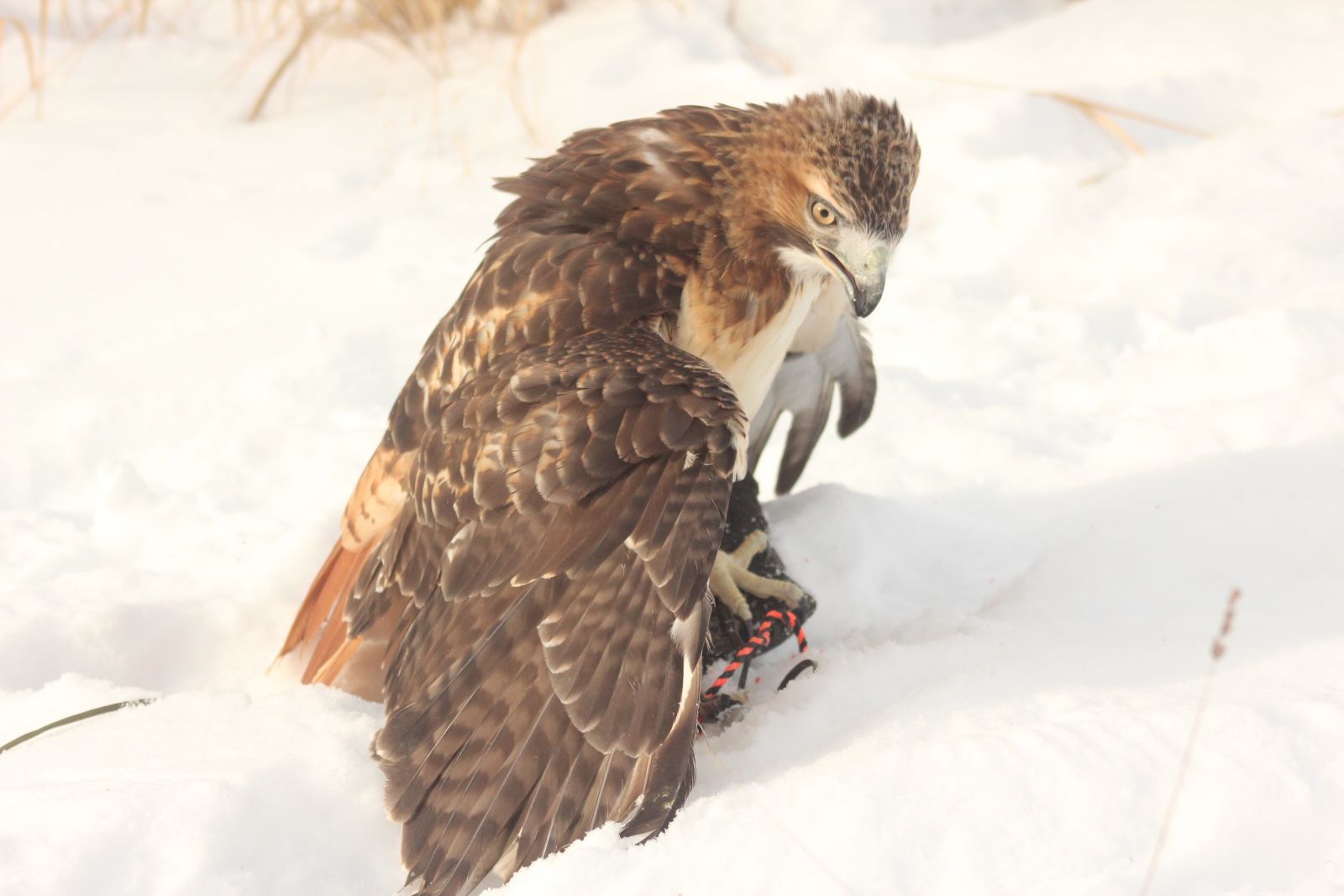
Bird encounters at The Wild Center
I've been to The Wild Center dozens of times, but the nature museum still has a way of surprising me.
Take last Friday, for example. I wanted to learn about some of the region's winged forest dwellers, so I decided to go to the raptor talk at 1 p.m. Raptors are awesome, powerful and magnificent creatures, and it's rare to see one up close.
Leah Valerio, an assistant curator at the museum, emerged into the museum's Great Hall — that's the large, high-ceiling room just beyond the entrance — with a red-tailed hawk named Seraphina clutching her gloved left hand.
Before Leah outlined some of the impressive abilities of the red-tail, she offered our group an awesome proposition. If we wanted, we could join her outside to watch Seraphina hunt for wild scurrying mammals like squirrel, snowshoe hare and mice.

I've followed a set of hare tracks onto an open ledge plenty of times in these mountains, only to see them abruptly stop in a fury of blood and disrupted snow. Picked off from above, there are no tracks intercepting the animal's path and no signs of it being dragged away. Scenes like that make my imagination go wild. Something actually swooped down and scooped this animal up. As amazing as it is to see evidence of that, it's something else entirely to see it happen.
Leah explained that hawks are ridiculously strong animals, but they're not as fast as falcons.
"With other birds of prey I don't wear such a thick glove, but when she hits my arm hard she bruises it, so I switched to a bigger glove," Leah said.
Leah said a full-grown red-tailed hawk weighs about 3 pounds and has a 4-foot wingspan. Seraphina is not like a dog or cat — Leah doesn't pet her — but she does have to touch her feet and feel her keel, a bone in her breast, to determine how much muscle is there. Like humans, a healthy bird has good muscle tone.
I was the only taker for the outside portion of the demonstration, so I followed Leah into the woods adjoining the back of The Wild Center's main parking lot. Our presence was immediately detected as we entered the Scotch pine forest. Birds twittered — yes, aside from the social media phenomenon, real birds actually emit real tweets — and red squirrels chattered like crazy.
"They know we're here," Leah said. "This is a really cool instance of inter-species communication. Other birds will pick up on that chickadee alarm call, and the squirrels absolutely know what that means. It's a good evolutionary trait. The more eyes watching for predators, the better."
Leah released the hawk, which flew to a nearby branch, ruffled its feathers, and peered into the dense forest with a look that gave new meaning to "if looks could kill." Birds of prey always look wild, they always look serious and they always look ready to claim their next meal. Seraphina took flight and dodged between pine branches with her brilliant red tail feathers fanned behind her.

The hunt was unsuccessful, but there was plenty of awe to be had. Leah blew a whistle and the bird responded with a long, graceful swoop that ended on her hand. I immediately understood what the glove was for — Seraphina has some power behind her.
The three of us continued on to nearby Greenleaf Pond, where Seraphina had equally bad luck in securing prey despite the mouse and vole highways crisscrossing the path. Leah prepared the whistle again, but this time she tossed a lure onto the ground before blowing it. Seraphina glided over the ice and zeroed in on the prey. In a fast, deliberate and graceful move she was hunched over the lure in a guarded posture and fiercely picking at its exterior, a behavior called mantling.

"People ask all the time if she would survive in the wild," Leah said. "You can see, she is pretty much wild. I have no fears for her."
That's good because Leah will one day say goodbye to the 2-year-old Seraphina and release her back into the wild.
"Something like 80 percent of these birds don't make it past their first year in the wild, for lots of reasons," Leah explained. "They don't catch enough prey, they get hit by a car, they eat something that's eaten rat poison, they hit a window or a power line. In my mind, working with a falconer for that first year or two kind of gets them past that."
The Wild Center has programs like the raptor talk throughout the winter. The museum's winter schedule is Friday through Sunday. On any given day you could meet a raven, owl or wood duck there, but if birds aren't your thing, stop in and meet an otter, porcupine or brook trout. When you're done with that, grab some dinner or go shopping in Tupper Lake!
